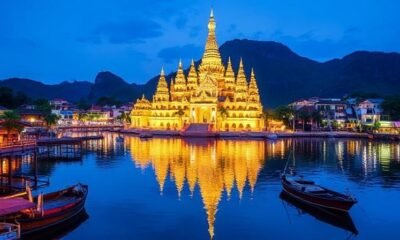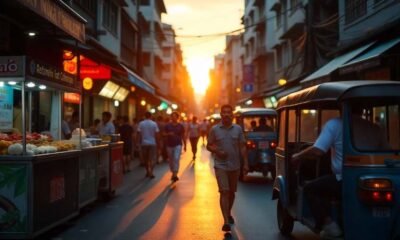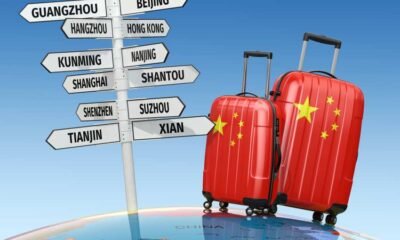Wellness Travel
Japan, Vietnam, China, India, Malaysia, Singapore, Thailand, Indonesia, and New Zealand Drive Asia-Pacific’s Explosive Growth in Authentic Wellness Travel for Summer 2025
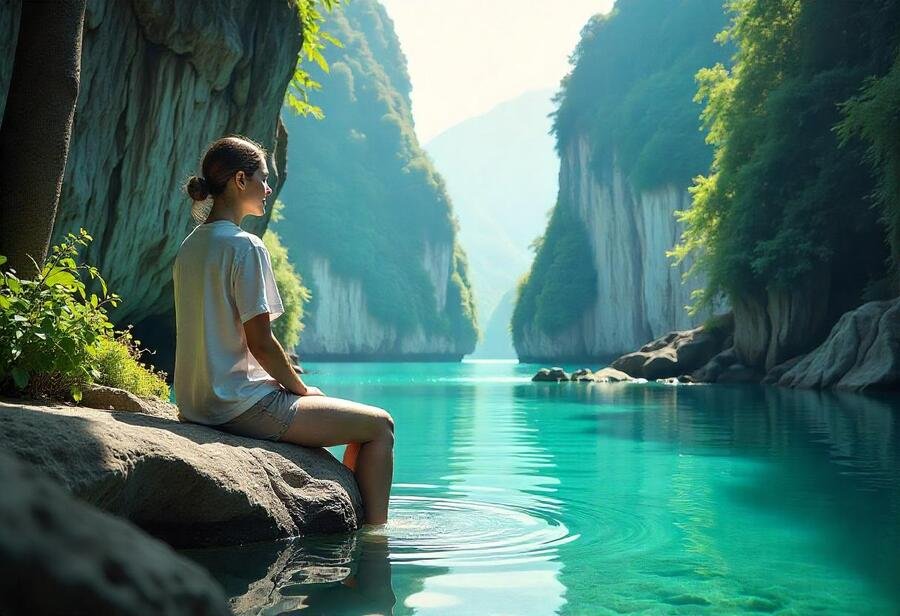
Wednesday, May 21, 2025
Japan, Vietnam, China, India, Malaysia, Singapore, Thailand, Indonesia, and New Zealand are spearheading a remarkable surge in Asia-Pacific’s summer travel market for 2025, driven by growing demand for authentic and wellness-focused experiences. Factors such as expanding middle classes, improved flight connectivity, and travelers’ shifting priorities toward meaningful cultural immersion, nature, and holistic wellbeing are fueling this explosive growth. These countries offer diverse attractions—from Japan’s vibrant cities and Vietnam’s coastal charm to Thailand’s renowned wellness retreats and New Zealand’s pristine landscapes—making the region the premier destination for purposeful summer travel this year.
Rising Destinations and Evolving Travel Drivers
Japan remains the standout destination this summer, while Vietnam’s coastal city of Nha Trang is quickly becoming a favorite for travelers seeking new experiences. Between June and September 2025, Tokyo and Osaka register the strongest growth in visitor numbers, reflecting a notable shift in tourism demand. Tokyo notably climbed from second place in 2024 to become the most sought-after city worldwide, while Nha Trang made a striking entrance on the list of trending hotspots.
China and India continue to dominate as the primary sources of outbound travelers in Asia. Mainland China held its position as the world’s largest outbound market in 2024, with Chinese tourists gravitating toward affordable destinations offering streamlined visa processes, such as Japan, Malaysia, and Singapore. Meanwhile, interest in Central Asian countries like Kazakhstan, Uzbekistan, and Kyrgyzstan is also on the rise.
India saw record-breaking outbound travel in 2024, with popular destinations including Abu Dhabi, Hanoi, and Bali. This surge is supported by expanded direct flight options and a growing middle-class population, reinforcing the critical role these markets play in shaping international travel patterns.
Shifting Traveler Preferences: Food, Nature, and Wellness at the Forefront
Across Asia-Pacific, tourists are moving away from conventional sightseeing in favor of immersive experiences centered on local cuisine, natural landscapes, and wellness activities. Locations such as Gianyar in Bali and Queenstown in New Zealand are seeing heightened interest. The Mastercard Wellness Trend Index identifies Thailand as a global leader in wellness tourism, attracting visitors with eco-conscious accommodations and meditation retreats. New Zealand’s climbing wellness scores further emphasize this growing market segment.
Sports tourism is also expanding rapidly, with international events like the Australian Open and the Baseball World Series in Los Angeles driving significant tourist spending. These events continue to serve as strong motivators, contributing substantially to the economic vitality of host cities.
Currency Fluctuations Shape Travel Patterns
Travelers from the Asia-Pacific region exhibit heightened sensitivity to currency changes. The weaker Japanese yen throughout 2024 encouraged a surge in inbound tourism to Japan. Research indicates that a one percent depreciation of the yen against the Chinese yuan corresponded with a one and a half percent increase in Chinese visitors. In contrast, similar currency shifts produced smaller visitor increases from countries such as New Zealand and the United States.
Record numbers of Singaporean tourists visited Japan in 2024, fueled by a forty percent appreciation of the Singapore dollar against the yen, despite rising travel and lodging costs.
Similarly, travelers from India, Singapore, South Korea, and Taiwan showed responsiveness to fluctuations in the US dollar. A one percent decline in the dollar’s value relative to these currencies was linked to a roughly zero point six to zero point eight percent rise in tourist arrivals. These findings highlight the influential role of exchange rates in shaping travel demand.
Business Travel Evolves and Security Remains a Priority
Business travel is shifting focus toward regional trips rather than global journeys. While the total number of business trips has decreased, their duration has increased. For example, the average length of US-based business trips to Asia-Pacific expanded from about nine days to just over ten.
Security concerns remain prominent, especially during peak travel seasons when fraud incidents can spike by up to twenty-eight percent in major tourist destinations. Common scams include inflated charges in eateries and taxis, fake tour operators, and deceptive rental listings, underscoring the need for vigilance among travelers.
Japan, Vietnam, China, India, Malaysia, Singapore, Thailand, Indonesia, and New Zealand are driving Asia-Pacific’s rapid growth in summer 2025 travel by offering authentic cultural experiences and world-class wellness destinations that meet evolving traveler priorities. Expanding middle classes and improved connectivity are fueling demand for meaningful, wellness-focused journeys across the region.
This report highlights the dynamic and evolving travel landscape, with Asia-Pacific leading the way toward purposeful tourism centered on authentic cultural engagement, wellness, and value. Despite economic challenges, the desire for meaningful and enriching travel experiences continues to drive the industry forward worldwide.
Wellness Travel
Caribbean Powers Into the Future With State of the Tourism Industry Conference (SOTIC) 2025 as Barbados to Host Groundbreaking Summit Focused on Sports, Wellness, and Youth Leadership

Tuesday, August 5, 2025
The Caribbean is charging full speed into a new era of tourism. At the forefront stands the Caribbean Tourism Organization’s State of the Tourism Industry Conference (SOTIC) 2025, set to take place September 30 to October 3 at the Hilton Barbados.
This critical event comes at a defining moment. As global travel trends shift rapidly and regional competition heats up, SOTIC 2025 offers an urgent platform for bold decisions. Ministers, private-sector leaders, airlines, developers, and tourism boards from across the region will gather to shape what’s next.
The stakes have never been higher. The Caribbean faces surging travel demand, constrained airlift, infrastructure gaps, and fast-growing interest in niche sectors. But the region also holds unique power—natural beauty, resilient culture, and booming hotel pipelines. SOTIC 2025 is where these assets will meet strategic planning.
Sports, Wellness, and Health Tourism Set to Drive the Next Growth Wave
This year’s theme, “Reimagining Caribbean Tourism: Research, Relevance and the Road Ahead,” reflects more than just words—it signals action. Caribbean nations are no longer relying only on sun and sand.
Sports tourism is seeing a sharp rise in demand, particularly among North American and European travelers. Islands like Jamaica, the Bahamas, and Trinidad are investing in stadiums, surf events, and international tournaments to attract athletic visitors.
At the same time, medical and wellness tourism is growing rapidly. Travelers want more than relaxation—they want recovery, mindfulness, and long-term well-being. The Caribbean’s climate, holistic healing traditions, and emerging hospital partnerships are making it a quiet favorite for health-focused escapes.
SOTIC 2025 will shine a light on these booming segments. Expect sessions that break down how hotels, airlines, and government policy can align to capture these high-value travelers. With the wellness market alone expected to exceed $1.3 trillion globally by 2026, the Caribbean cannot afford to fall behind.
Regional Air Travel Remains a Sticking Point—and Top Agenda Item
Air connectivity remains one of the Caribbean’s biggest challenges. High ticket prices, limited inter-island flights, and inconsistent schedules make multi-destination travel tough. These issues threaten both leisure and MICE (Meetings, Incentives, Conferences, and Exhibitions) segments.
SOTIC 2025 is expected to host working groups focused on solving these barriers. New route planning, airline incentives, and regional code-sharing strategies could emerge from these sessions. With tourism as the economic engine of many islands, solving airlift issues is not optional—it’s essential.
Airport authorities, aviation ministers, and private carriers will also review potential airport disruptions in high-traffic hubs. Resiliency planning, climate impact mitigation, and smoother immigration protocols may all take center stage during this year’s policy discussions.
Youth Congress Brings Urgency, Energy, and Fresh Vision
One of the most anticipated parts of SOTIC 2025 is the Regional Tourism Youth Congress. Junior Ministers of Tourism from across CTO member states will step forward to present ideas, innovations, and strategies for tomorrow.
This unique session is more than symbolic. It reflects the CTO’s commitment to real-time inclusion. Today’s youth are tomorrow’s travel innovators. Their perspectives on sustainability, digital storytelling, and climate-aware travel are already shaping how the industry evolves.
This year, the Congress will focus on social entrepreneurship, regenerative tourism, and youth-led destination branding. These are areas where fresh ideas can spark real action—and push policymakers to think beyond tradition.
SOTIC 2025: Why the World Should Watch Barbados This Fall
Barbados, long a leader in Caribbean diplomacy and tourism innovation, will play host at a time when the region must adapt or fall behind. Tourism is evolving fast—no longer about volume but value, no longer about selling rooms but building long-term loyalty.
SOTIC 2025 is the forum that brings the Caribbean’s best minds together in one place to take control of that evolution. From airline route gaps to wellness resort investment, from hotel labor reform to cruise diversification, this conference will hit the key issues head-on.
As new travelers emerge and global trends evolve, one thing is certain—what happens in Barbados this September could shape the future of Caribbean tourism for the next decade.
Wellness Travel
Medical Tourism Packages Transforms and Revolutionizes Wellness Travel in Latin America with Exclusive Tailored Services in Colombia, Costa Rica and Panama
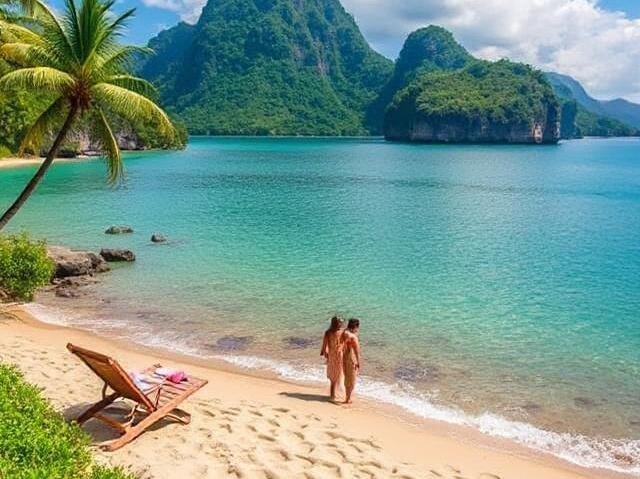
Tuesday, August 5, 2025
Medical Tourism Packages is one of the biggest high-end medical travel experience providers and after expanding into Latin America, it is solidifying its place as an early bird in what’s predicted to be a rapidly growing wellness tourism area. The home of some of the best medical experts in the world, the region is seeing an unprecedented increase in demand for luxury wellness experiences. It has carved out a notable presence in the burgeoning crossroad between healthcare and luxury tourism, where it delivers life-changing medical treatments alongside exclusive travel experiences.
Latin America: The New Hub for Wellness Tourism
Latin America, particularly countries like Colombia, Costa Rica, and Panama, has emerged as a premier destination for wellness tourism, attracting international travelers seeking medical treatments paired with restorative and rejuvenating experiences. These nations are renowned for their state-of-the-art medical facilities, skilled healthcare professionals, and rich cultural offerings. Medical Tourism Packages has positioned itself as a bridge between these high-quality services and global clients who seek personalized, seamless, and stress-free travel experiences.
The company’s offerings are designed for travelers looking for more than just a vacation—they aim to combine world-class healthcare with the relaxation and rejuvenation of a luxury holiday. By focusing on a holistic approach to wellness, Medical Tourism Packages provides tailored experiences that not only address health concerns but also promote mental and emotional well-being.
Personalized Medical Care with a Luxurious Touch
What distinguishes Medical Tourism Packages is its all-encompassing service approach. The company manages every aspect of the client’s journey, ensuring a stress-free process from the initial consultation to post-procedure care. Whether it’s arranging transportation, accommodations, or a customized wellness plan, clients are assured that their needs are handled with the utmost care and attention.
This all-inclusive approach, which takes the burden off clients, is particularly appealing to those seeking high-quality care without the complexities that often accompany international medical travel. From selecting the right medical facility to providing culturally enriching experiences, Medical Tourism Packages ensures that each journey is a memorable and life-changing one.
Expanding Wellness Offerings for a Global Audience
As the wellness tourism industry continues to grow, Medical Tourism Packages is responding by expanding its portfolio to include more specialized programs. These new offerings focus on rejuvenation, stress recovery, hormone balance, and other holistic wellness practices. These retreats are designed to help individuals recharge physically, emotionally, and mentally, with services that cater to a range of health concerns.
The company’s proactive strategy ensures that it remains a central figure in the evolving global wellness market, providing bespoke solutions for travelers who prioritize their health and well-being. As more people seek meaningful and restorative travel experiences, Medical Tourism Packages is poised to meet the rising demand with its expertly crafted packages and unparalleled service.
A Bright Future for Wellness Tourism in Latin America
With the continued growth of medical tourism, Latin America is poised to become a key player in the global wellness travel sector. Medical Tourism Packages is at the forefront of this trend, providing innovative, high-end travel packages that cater to the needs of an increasingly health-conscious international audience. As the company expands its services and programs, it is helping to elevate the region’s reputation for excellence in both healthcare and hospitality.
The future of wellness tourism in Latin America looks incredibly promising, and Medical Tourism Packages is leading the way in offering travelers transformative experiences that combine medical care with luxury, relaxation, and cultural exploration.
Medical Tourism Packages is changing the wellness travel game in Latin America by incorporating top-rate medical care with a luxury level of service. It has kept it at the front of Colombia, Costa Rica, and Panama service model with a dedicated and inclusive attendance. This makes the space to flourish for years to come and Medical Tourism Packages all set to occupy a strong place in the global medical tourism arena through expanding its horizon and area of offerings as well gearing up with refer solely on all kinds holistic wellness solutions. With wellness tourism on the rise, the company is set to provide even more holistic and health-related travel assortments for travellers looking to get pampered, but also culturally enriched.
Wellness Travel
Sleep Tourism Revolutionizes Wellness Travel: How Luxury Travelers Are Prioritizing Rest and Recharge Over Packed Itineraries

Monday, August 4, 2025
Wellness tourism has traditionally revolved around spas, yoga retreats, and fitness holidays. However, wellness travel is now undergoing a new transformation with the emergence of sleep tourism. As health and wellness travel continues to grow, there is a new trend among luxury travelers, who now prefer holidays dedicated solely to repose and recovery. Indeed, sleep is the new luxury, as high-end travelers now enjoy vacations specifically designated to help them relax and recover in ways that sightseeing trips cannot.
The paradigm shift away from vacations based on cramming as many attractions into a limited timeframe is now emerging. The post-pandemic era has ushered in a new vacation paradigm focused on recovery, relaxation, and quality sleep. Coupled with the harried pace of life, the enduring post-pandemic reset is prompting many travelers to understand and appreciate that real luxury is not in an exhausting to-do list of activities, but in the ability to fully reset both mentally and physically. This burgeoning shift is only going to further refine the contours of the sleep tourism market.
The Introduction of Sleep Tourism
With an overbooked timetable, nonstop screen exposure, and anxiety levels at an all-time high, resting has become a crucial part of our life, an undeniable and non-negotiable need. For decades, opulent vacations have been synonymous with high-end hotels, a-la-carte dining, and exclusive access, and while these features are still attractive for travelers, there has appeared a new niche that prefers tranquility, stillness, and more crucially, respite. Travel for the purpose of resting has emerged to help people escape the endless cravings and repace modern lifestyles to prioritize, more unequivocally, their needs: resting.
The entire industry is focused on ensuring that clients are adequately restored, with the intent to optimize rest and health at all levels. Sleep tourism may look like high-end hotels that provide specialized sleep-boosting services or entire pre-designed holistic vacations for sleep-betterment. Sleep-enhancing travel experiences look markedly different and their core is not to dragging the clients around endless sightseeing, cramming numerous activities each to minute precision. Instead, these journeys have proved to be life and well-being enhancing.
The Sleep Tourism Experience: Rest as the Ultimate Luxury
Unlike conventional vacations which focus on discovering new places, sleep tourism focuses on making the perfect environment for sleep. There are now hotels and wellness resorts at the top of the industry that are promoting sleep through the use of advanced technology, sleep therapeutic environments, and professionals to boost sleep adherence by making sleep restorative.
An added benefit of luxury retreats are the many services aimed at enhancing and promoting sleep. These services include sleep consultations with experts, mood lighting that mimics natural circadian lighting, aromatherapy, top of the range mattresses, and specially designed pillow menus. Additionally, resorts serve sleep enhancing foods and beverages like chamomile tea, magnesium rich snacks, and melatonin infused treats which promote relaxation.
Some retreats create full programs dedicated to helping guests sleep. This includes tailoring daily meditation, sound therapy, relaxation, and sleep inducing massages to the guest’s sleep goals. This method, while deeper than traditional spa services, focuses on rest at the heart of the travel experience instead of spa treatments. This approach is holistic and blends many treatments for wellness.
The Rise of Sleep-Centered Vacations
The popularity of wellness tourism is leading to an increased demand for sleep-centered vacations. Modern travelers understand sleep’s benefits not only for their physical well-being but also for their mental and emotional health. We know that sufficient sleep improves mood, productivity, and overall immune health. The understanding and appreciation of sleep’s restorative benefits and its vital role in health and wellness has only recently started gaining traction.
In response to this emerging trend, an increasing number of luxury hotels, resorts, and retreats are developing programs aimed at enhancing sleep quality. Some accommodations are now catering to travelers who wish to unplug and fully immerse themselves in rest, offering tech-free rooms and restorative sleep environments where guests can truly relax.
In more metropolitan areas, some luxury hotels are also offering sleep-related amenities—such as sleep pods— and the scheduling of personalized sleep sessions. Guests are no longer simply resting between activities. Instead, they are indulging in more structured, deep relaxation that invites restorative relaxation.
Sleep Tourism and Its Effect on the Travel Industry
The emergence of the sleep tourism industry is particularly affecting luxury travel and the wellness sectors. It is resulting in the transformation of the travel industry as people shift their focus from sightseeing and adventure to rest and recovery. People are not just looking to enrich their travel experience but also to enhance their lifestyles and overall well-being.
The sleep tourism industry is also being further refined as hospitality resorts are improving their quality and level of service. They are now incorporating sleep science, and some resorts go as far as collaborating with sleep doctors to create custom sleep programs. Many luxury hospitality brands are turning to sleep improving devices, such as sleep-tracking devices, AI-powered sleep systems, and advanced lighting techniques, which scientifically enhance sleep. Rather, what constitutes a luxury vacation is being redefined to focus on the guests’ peace and balance within, rather than souvenirs and extravagance.
Wellness and Its Relation to Sleep Tourism
Wellness tourism has always focused on rejuvenation and self-care, with sleep tourism fitting neatly within these sweeping trends. Sleep, alongside exercise and diet, is one of the most vital components concerning health. It has long been considered the least important out of the three. Yet, the global rise in stress – and with it, the number of people suffering from sleep-related issues – is changing the narrative toward the need to sleep.
Sleep tourism is in tandem with the heightened demand for holistic wellness journeys, where one is able to travel and attend to every area of their body and mind. It allows people to completely turn off their devices and dedicate themselves to self-care, meditation, and healing. These wellness retreats help people step away from the overwhelming and countless responsibilities of daily life, travel, reset their biological clock and come back with an unsuspected rejuvenation.
Sleep tourism is an excellent alternative for people looking for a better balance in their trips. Instead of focusing on visiting countless locations to further pass the time, holidaymakers can now place a premium on health. With the changing of travel habits, the industry is beginning to embrace the concept of vacations focusing on rest and recovery – considered the new hallmarks of luxury.
The Effect on Travel Preferences and Popular Destinations
The emergence of sleep tourism is shifting how people select their travel destinations. While adventurists and sightseers previously prioritized active relaxation vacations, focus on relaxation has now shifted towards these leisurely centered getaways. Cozy accommodations in mountains and countryside resorts, as well as coastal retreats, are now popular as travelers actively seek rest and sleep.
Hotels and resorts are now offering tailored sleep and rest services, providing soundproof rooms, blackout curtains, and other aids that help guests achieve gentle and restorative sleep in these serene surroundings. These rest care escapes cater to people who want to completely disconnect from everyday stressors and center their attention on their mental and physical health. Given their unobtrusiveness, these escapes are ideal for individuals who want to relax far from the noise and stress of everyday life.
A New Look on Opulent Travel
The focus on sleep has redefined luxury travel. Resting in opulent accommodations has shifted sleep means luxury travel. In the past, luxury travel centered on indulgent, extravagant dining, overpriced activities, and exclusive services offered to guests. Now, the luxury of sleep and relaxation has emerged as a new offering for tourism. For wealthy travelers, the opportunity to truly decompress and rejuvenate has shifted luxury to sleep tourism, which is a means to achieve the maximum rest.
The change in emphasis reflects broader sociocultural trends. In the context of modern day challenges, especially in high-pressure metropolitan areas, there is increasing awareness of the need for rest. Consequently, sleep tourism emerges not only as a travel trend but as a new cultural shift towards mindfulness, and balanced holistic wellness.
Conclusion: The Future of Sleep Tourism
The evolution of travel is undeniable and sleep tourism, as a concept, is an indicator of this. In the wellness tourism sector, rest which was previously overlooked is emerging as a focal point. For high-end travelers, a vacation is not solely an escape but a holistic opportunity for rejuvenation and reset of the body and mind. Sleep tourism enables travelers to put their health on the priority list unlike in traditional vacations, signaling the dawn of wellness-driven travel.
In the coming years, we can expect many travel destinations and luxury resorts to begin incorporating the principles of sleep tourism, integrating rest and recovery as a crucial segment of the travel itinerary. The more central sleep tourism becomes, the more it will continue to redefine the purpose of vacationing—offering a getaway balanced on uninterrupted repose, not on a checklist of activities.
-

 Brand Stories2 weeks ago
Brand Stories2 weeks agoBloom Hotels: A Modern Vision of Hospitality Redefining Travel
-

 Brand Stories1 week ago
Brand Stories1 week agoCheQin.ai sets a new standard for hotel booking with its AI capabilities: empowering travellers to bargain, choose the best, and book with clarity.
-

 Destinations & Things To Do2 weeks ago
Destinations & Things To Do2 weeks agoUntouched Destinations: Stunning Hidden Gems You Must Visit
-

 Destinations & Things To Do1 week ago
Destinations & Things To Do1 week agoThis Hidden Beach in India Glows at Night-But Only in One Secret Season
-

 AI in Travel2 weeks ago
AI in Travel2 weeks agoAI Travel Revolution: Must-Have Guide to the Best Experience
-

 Brand Stories1 month ago
Brand Stories1 month agoVoice AI Startup ElevenLabs Plans to Add Hubs Around the World
-

 Brand Stories4 weeks ago
Brand Stories4 weeks agoHow Elon Musk’s rogue Grok chatbot became a cautionary AI tale
-

 Asia Travel Pulse1 month ago
Asia Travel Pulse1 month agoLooking For Adventure In Asia? Here Are 7 Epic Destinations You Need To Experience At Least Once – Zee News
-

 AI in Travel1 month ago
AI in Travel1 month ago‘Will AI take my job?’ A trip to a Beijing fortune-telling bar to see what lies ahead | China
-

 Brand Stories2 weeks ago
Brand Stories2 weeks agoContactless Hospitality: Why Remote Management Technology Is Key to Seamless Guest Experiences

